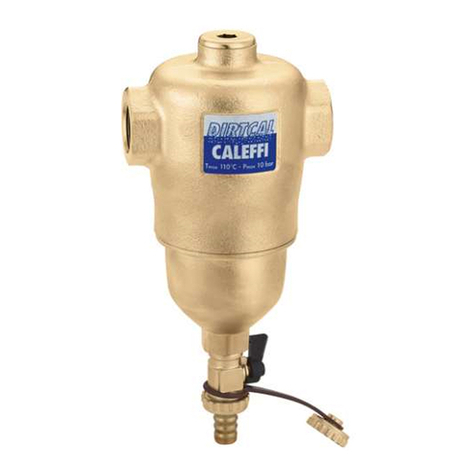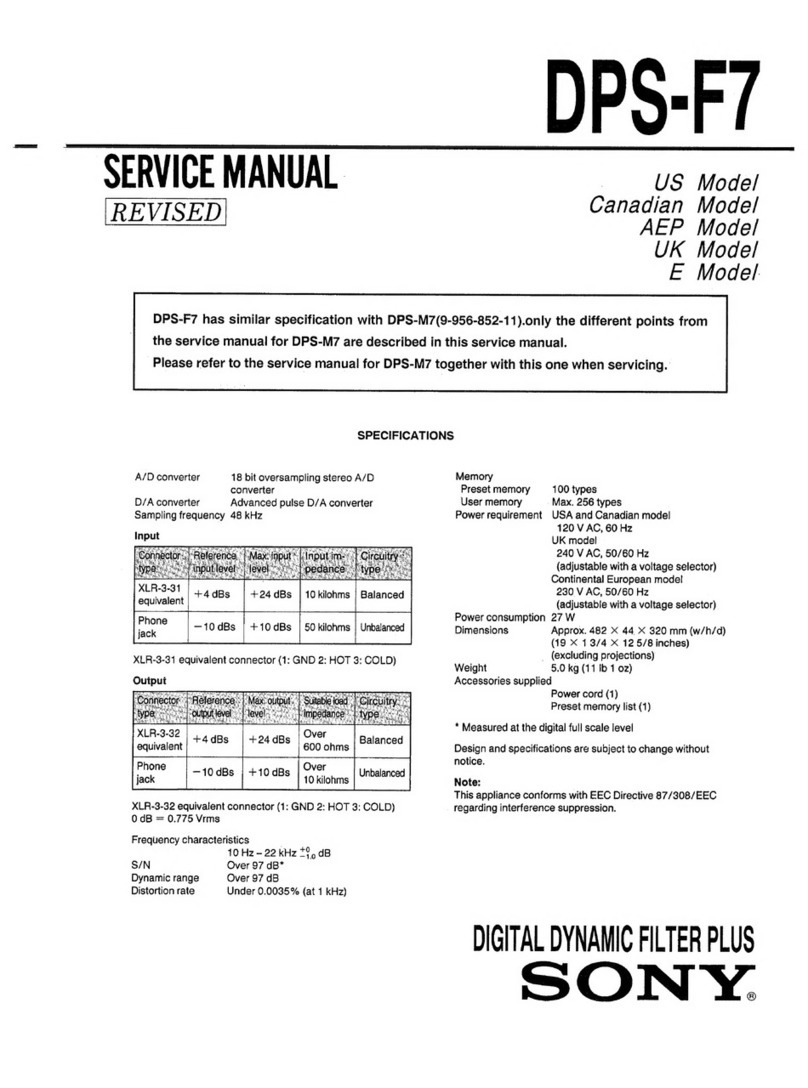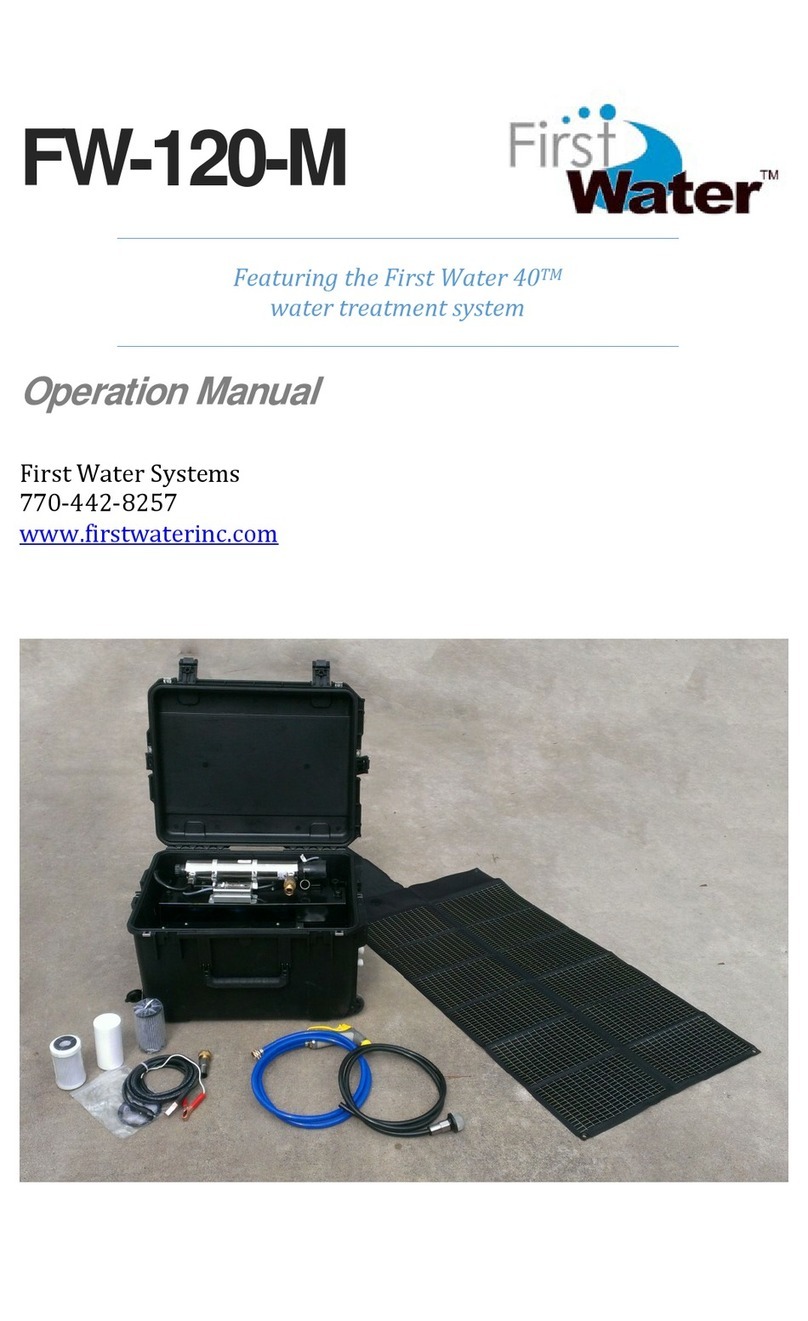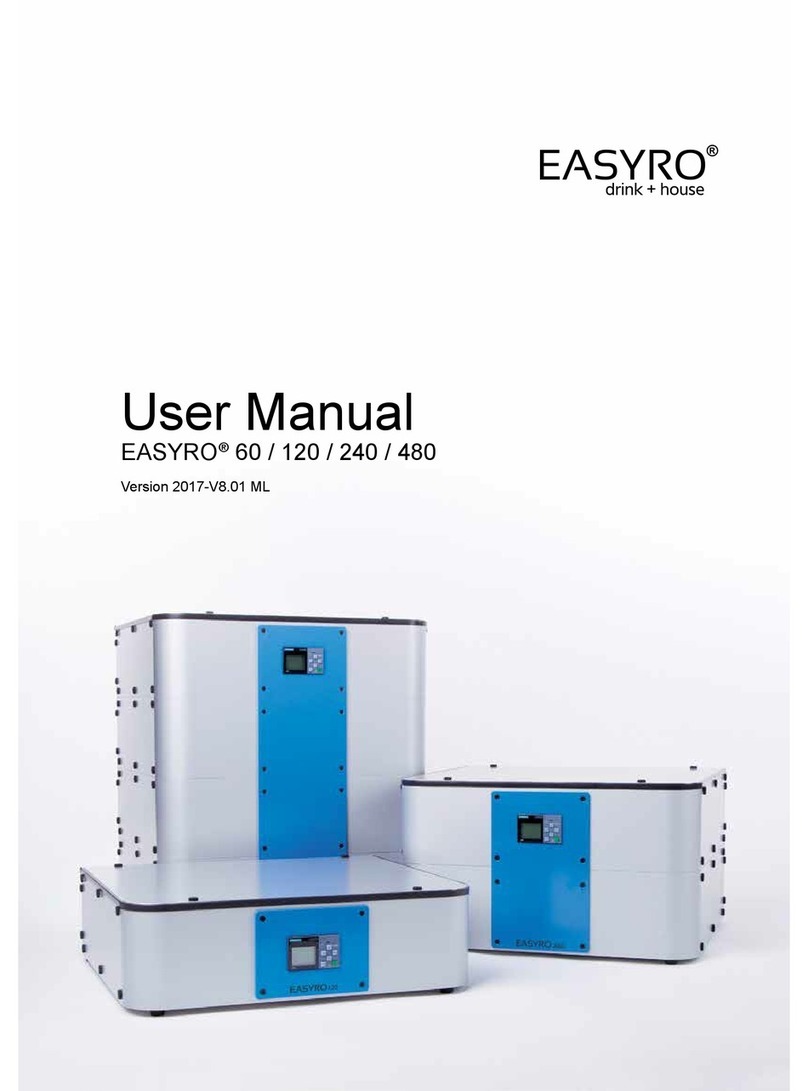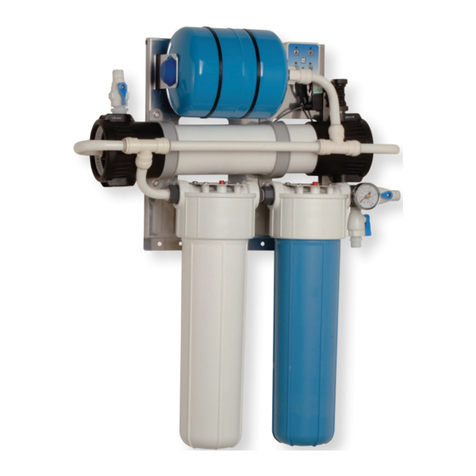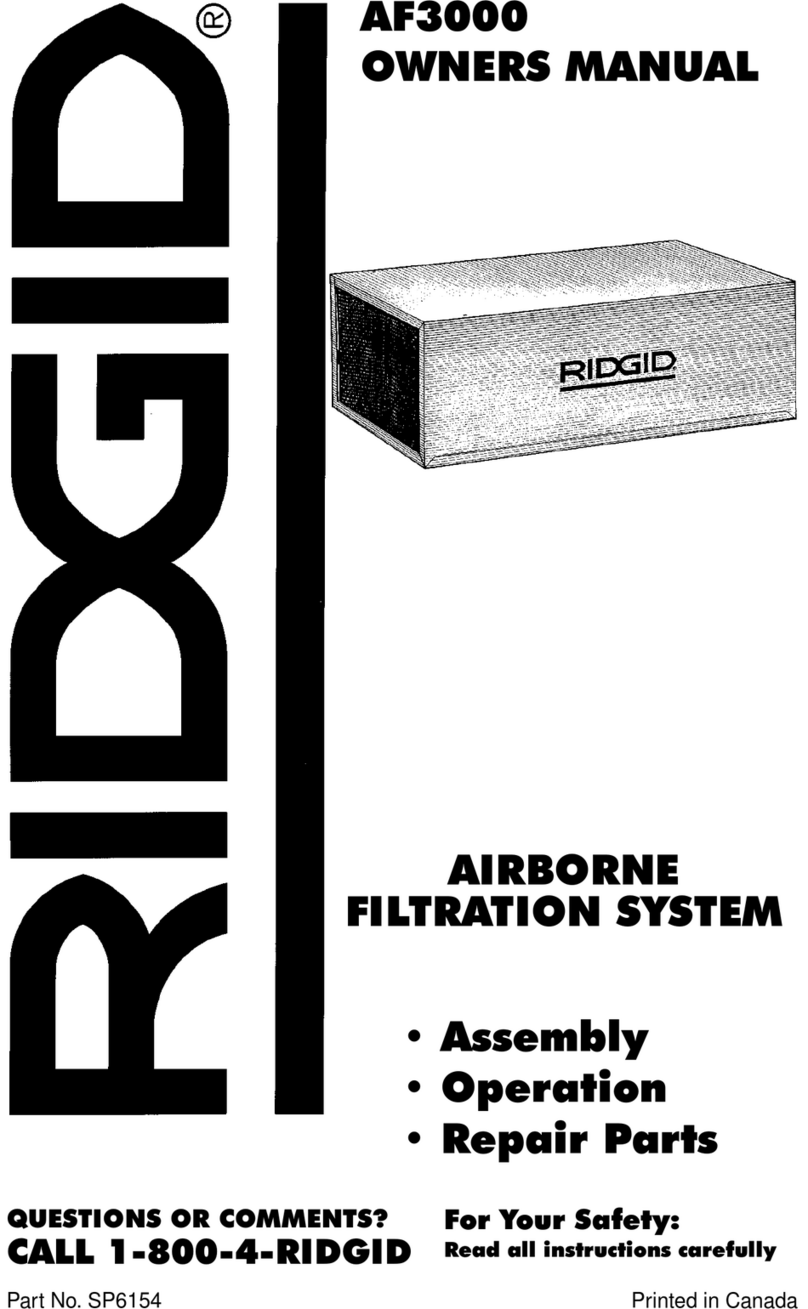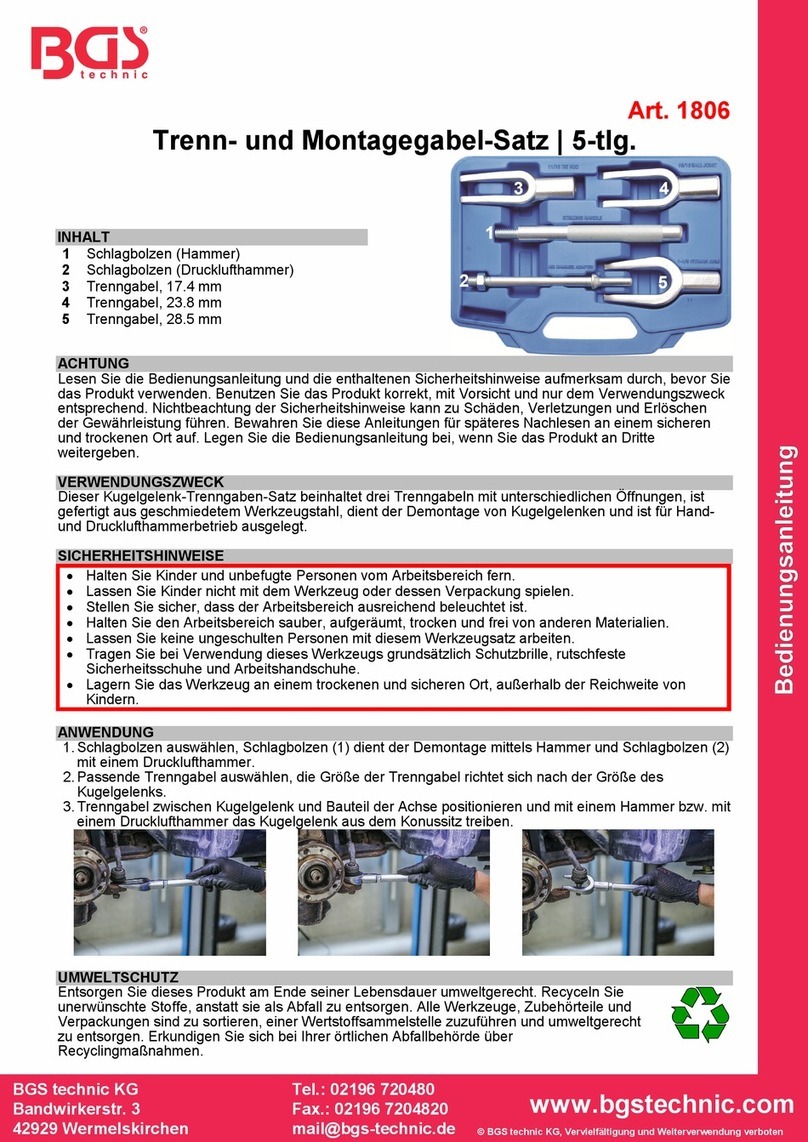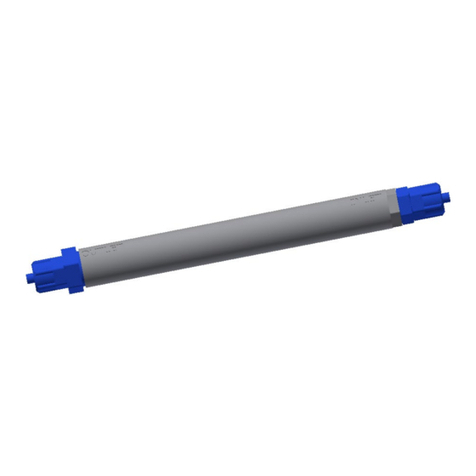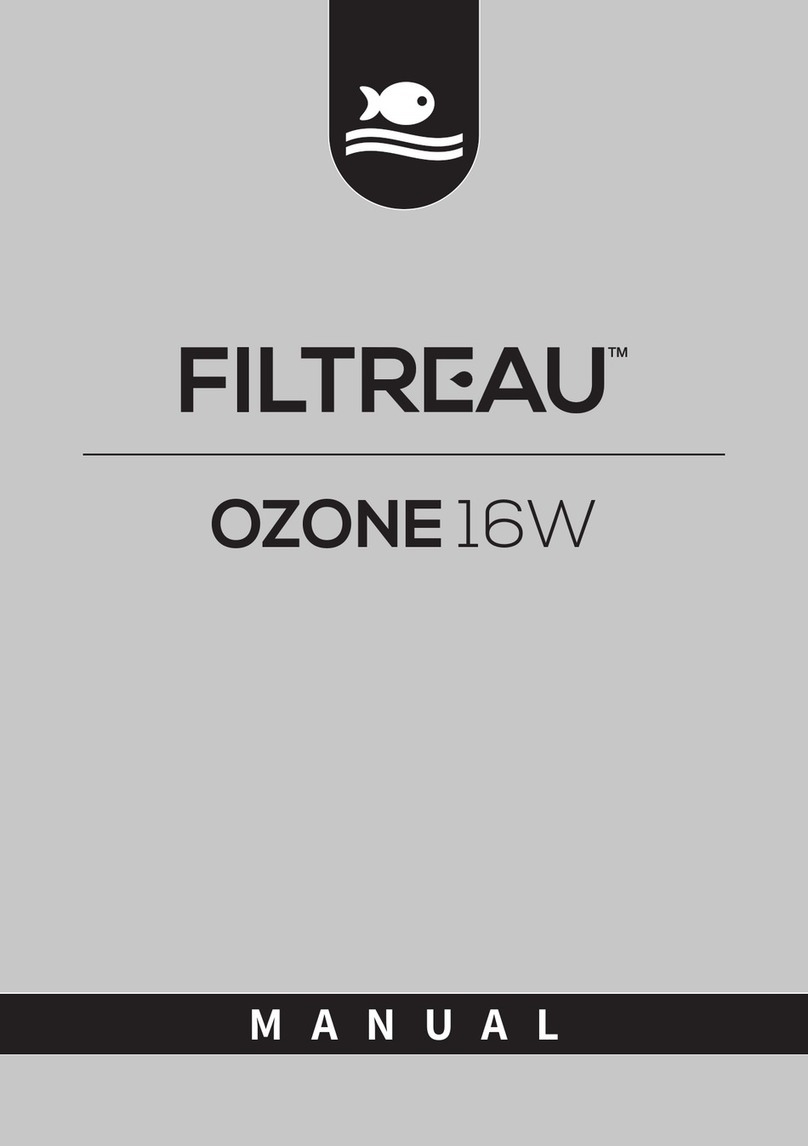SPEL Spel Filter Manual

spel.com.au
Spel Filter®
Cartridge Filter For Tertiary Stormwater Treatment
Operation &
Maintenance Manual

23
SPEL Stormwater Installation & Operation Manual | SPEL Filter
Contents
Introduction........................................................................ 3
Features.............................................................................. 4
Sizes .................................................................................... 6
System Configuration.......................................................7
Health and Safety............................................................. 8
Maintenance frequency.................................................10
Maintenance Procedure.................................................11
General Cleaning ............................................................12
Cartridge Recycling and Replacement .....................13
Standard Drawings ........................................................14
Site Exit & Clean Up ......................................................16

23
visit www.spel.com.au for detailed data sheets on our products
Introduction
Understanding how to correctly and safely maintain
the SPELFilter is essential for the preservation of the
filter’s condition and its operational eectiveness. The
SPELFilter is a highly engineered stormwater filtration
device designed to remove sediments, heavy metals,
nitrogen and phosphorus from stormwater runo.
The filters can be housed in either a concrete or
fibreglass structure that evenly distributes the flow
between cartridges.
Flow through the filter cartridges is gravity driven and
self-regulating, which makes the SPELFilter system
a low maintenance, high performance stormwater
treatment device.
This Guide will provide the necessary steps that are to
be taken to correctly and eciently ensure the life of
the SPELFilter product
Figure 1 - SPELFilters in a concrete chamber / vault

45
SPEL Stormwater Installation & Operation Manual | SPEL Filter
Features
The SPELFilter has a patented
design that facilitates influent flow
over the entire surface area of
the media, providing consistent
pollutant removal within a small
footprint.
The SPELFilter provides highly
eective media filtration using
gravity flow conditions, without the
need for moving parts or floating
valves. This eliminates the risk of
mechanical failure, such as stuck
valves and seizing components
during its service life. This
provides highly robust treatment
performance.
Hydraulic head provided by a
suitably sized weir in the filter
vault forces stormwater through
the filter media via the inlet ports
underneath the filter cartridge.
Refer to the table below for
minimum head required for the
SPELFilter cartridges to assist in
sizing the weir.
The water to be treated enters the
SPELFilter cartridge via an upwards
direction as the water level builds
up around the SPELFilter. This
‘up flow’ reduces the amount of
sediment that could enter the
media cartridge, as the sediment
is allowed to drop to the vault
floor under gravity. Any remaining
sediment in the water is introduced
through the filter media under
hydraulic pressure and is filtered.
Water is filtered through the
media, where dissolved and
particulate Total Nitrogen and
Total Phosphorus are removed via
reaction with the media, in addition
to the removal of Total Suspended
Solids / sediment.
SPELFilter Media Self-
Backwash feature
A one-way air release valve located
at the top of the filter cartridge
allows air to escape as the cartridge
fills up with water. This creates a
siphonic flow condition as the air is
completely evacuated from inside
the SPELFilter cartridge. Siphonic
flow conditions are maintained until
such time the water level outside
of the cartridge falls beneath the
inlet ports underneath the filter. At
this moment, the water level inside
the SPELFilter cartridge is higher
than the surrounding water level.
The water inside the SPELFilter
cartridge is then expelled upon the
break of the siphon, and the water
flows down and out of the inlet
ports under gravity, onto the vault
floor.
This is a highly eective backwash
of the media and allows the
expulsion of a high proportion of
sediment out from the SPELFilter
media. The expelled sediment can
be removed either manually or with
a vacuum from the vault floor.
This backwash eect allows the
media to remain highly conductive
and is the key to the industry
leading longevity of the SPELFilter
cartridge system, which does not
need replacement for at least 5
years, and typically will achieve
up to 6-8years of service, subject
to the SPELFilter being regularly
maintained in accordance with
this guideline and in accordance
with the specific needs of the
catchment.
Figure 2 - Diagram of water flow
through SPELFilter
Figure 3 - Typical Outlet Weir Wall

45
visit www.spel.com.au for detailed data sheets on our products
Features
Self Supporting Feet
Each SPELFilter cartridge stands on 4 feet, which
negates the need for the construction of a false floor in
the vault. The feet are bolted to the vault floor with the
supplied stainless steel angles and M10 bolts. The feet
allow a clear height from the vault floor up to the inlet
ports of 240mm. The absence of a false floor allows
plenty of room for backwashed sediment to evacuate
from underneath the cartridges and thereby avoid
blocking the inlet ports to the SPELFilter from sediment
buildup. It is for this reason that SPEL recommended
the sediment buildup not exceed 150mm above the
vault floor, so as to avoid blocking the inlet ports of
the SPELFilter. Blockage of the inlet ports due to
sediment accumulation in the vault floor will cause the
SPELFilter to go into bypass and be ineective. Hence
it is important to keep up to date with monitoring and
maintaining the SPELFilter vault.
Figure 4 - Bolting the feet
Figure 5 - Underside of the SPELFilter showing the screened inlet
ports and the connection for the outlet pipe in the middle
Figure 6 - the top of the SPELFilter showing the location of the one
way air valve

67
SPEL Stormwater Installation & Operation Manual | SPEL Filter
Sizes
SPEL Stormwater manufactures two height cartridges for varying site constraints as shown below. Each cartridge
is designed to treat stormwater at a flow rate of 1.47 Litres per second and 2.83 Litres per second for the half-
height cartridge (model No. SF.15-EMC-M) and full-height cartridge (model No. SF.30-EMC-M) respectively.
Full Height SF.30-EMC -M Half height SF.15–EMC-M
SPELFilter total height 874mm 560mm
SPELFilter Diameter 726mm 726mm
Minimum Head required 850mm 450mm
Treatment flow rate 2.83 L/s 1.47 L/s
Height of inlet ports above
vault floor 240mm 240mm
Filtered water collection
pipe diameter 50mm 50mm
SPELFilter Full Height- SF.30-EMC-M SPELFilter Half Height - SF.15-EMC-M

67
visit www.spel.com.au for detailed data sheets on our products
System Configuration
SPELFilter cartridges are installed in concrete or fibreglass tanks commonly referred to as ‘vaults’. The vault
selection and configuration are based on site characteristics and/or constraints; computational stormwater quality
modelling; and selected SPELFilter models. Typical SPELFilter system configurations are shown below.
In-line SPELFilter Configuration
O-line SPELFilter Configuration
Bypass
Inlet
Inlet
Outlet
Outlet

89
SPEL Stormwater Installation & Operation Manual | SPEL Filter
Health and Safety
A. Personal Health & Safety
When carrying out the necessary installation
operations of the SPEL Filter all contractors and sta
personnel must comply with all current workplace
health and safety legislation.
The below measures should be adhered to as
practically as possible.
• Comply with all applicable laws, regulations and
standards
• All those involved are informed and understand their
obligations in respect of the workplace health and
safety legislation.
• Ensure responsibility is accepted by all employees
to practice and promote a safe and healthy work
environment.
B. Personal Protective Equipment /
Safety equipment
When carrying out the necessary installation
operations of the SPEL Filter, wearing the appropriate
personal protective equipment and utilising the
adequate safety equipment is vital to reducing
potential hazards.
Personal protective equipment / safety equipment in
this application includes:
• Eye protection
• Safety apron
• Fluorescent safety vest
• Form of skin protection
• Puncture resistant gloves
• Steel capped safety boots
• Ear mus
• Hard hat/s
• Sunscreen
C. Confined space
In the event access is required into the vault, confined
space permits will be required which is not covered
in this Guide. Typical equipment required for confined
space entry include:
• Harness
• Gas detector
• Tripod
• Spotter
D. Trac Control
It is not uncommon for SPEL Filter cartridges to be
installed underneath tracable areas. Minimum
trac control measures will need to be put in place
in accordance with trac control plans set out by
respective local and state road authorities.
Vaults are to be treated as confined space.
Entry by permit only.
Monitor weather conditions prior to operation
maintenance. Do not enter a vault during an
episode of heavy rain as this can create a risk
of drowning.

89
visit www.spel.com.au for detailed data sheets on our products

10 11
SPEL Stormwater Installation & Operation Manual | SPEL Filter
Maintenance Frequency
The SPELFilter’s design allows for a greater life
span when frequently maintenance. Maintenance
is broken up into three categories which include:
standard inspection; general cleaning; and cartridge
replacement.
Standard inspection
Standard inspections are conducted at regular four-
month intervals. At this time, an approved trained
maintenance ocer or SPEL representative shall
undertake all measures outlined in Maintenance
Procedure, Standard Inspection.
General Cleaning
At the end of each standard inspection, trigger
measures will identify if general cleaning is required.
General cleaning will need to be executed immediate
during standard inspections if the follow triggers are
satisfied:
• Build-up of debris/pollutants within the vault greater
than 150mm;
• Accumulation of debris/pollutants on the outlet
chamber of the SPELFilter vault;
• After large storm events, tidal or flooding impacts at
the request of the owner;
Cartridge Replacement
Stormwater treatment is dependent on the
eectiveness of the SPELFilter cartridge system. As the
SPELFilter ages, pollutants will inundate the cartridge
and ultimately reduce the treatment flow rate. At this
point, a SPELFilter flow test apparatus will be utilities to
determine if replacement cartridges are required.
Based on the [site] concept modelling (MUSIC) and
previous industry experience, we estimate the life
of the SPELFilter to be between 6 - 8 years. As a
minimum requirement, each SPELFilter cartridge
should be replaced within 10 years.
The life cycle of the SPELFilter can be impacted if
standard inspections and general maintenance is not
undertaken in accordance with this operation and
maintenance Guide. Other factors that will aect the
above life cycle of the SPELFilter include:
• Installation of cartridge system during construction
phase and impacted by construction sediment loads;
• Neglecting to install pre-treatment using an industry
approved GPT or a surface inlet pit trash bag such as
the SPEL StormSack.
• Unforeseen environmental hazards aecting the
SPELFilter functionality.

10 11
visit www.spel.com.au for detailed data sheets on our products
Maintenance Procedures
Stormwater pollutants captured and retained by the
SPELFilter system need to be periodically removed to
ensure environmental values are upheld. All associated
maintenance works is heavily dependent on the
site’s operational activities and generated stormwater
pollutants. To ensure the longevity of the installed
SPELFilter treatment system, it is imperative that the
procedures detailed in this Guide are followed and all
appropriate measures are actioned immediately.
Standard inspection
The standard inspection requires personal experience
of SPEL products to visual inspection the vault and
filter conditions.
Confined space requirements may not be required if a
full inspection and assessment of each SPELFilter can
be achieved at surface level without being deemed a
confined space entry.
The standard inspection requires personal experience
of SPEL products to visual inspection the vault and
filter conditions.
Confined space requirements may not be required if a
full inspection and assessment of each SPELFilter can
be achieved at surface level without being deemed a
confined space entry.
Site Inspection Procedures
1.Implement Pre-start safety measures.
Ensure that the area in which operational works are to
be carried out is cordoned o, to prevent unauthorised
access. Adequate safety barriers must be erected.
Area in which work is to be carried out must be clean,
safe and hazard free. (Refer to figure 4.)
2. Set-up Gantry Tri-pod above Manhole.
Assemble and position the gantry above the manhole
safely and as practically as possible. Attach the winch
or chain block to the gantry for lifting the SPEL Filters.
Perform safety procedures ie. Attach harnesses etc. (if
confined space).
3. Open manhole lid.
Once you have sent up the Gantry and ensured that
the area is safe to operate in, you can proceed to open
the manhole lid, using lid lifters.
4. Conduct Gas tests.
(If tank is classed confined space)
Once the lids have been removed to a safe distance
to prevent tripping, you must then proceed to conduct
gas tests. Perform necessary gas tests according to
the confined space regulations.
5. Once confined space has been deemed safe to
operate in, enter tank safely.
Once you have carried out the required gas test and
the work area is deemed safe, you may then enter the
pit via a ladder or winch system to assess the work
area you will be operating in. Ensure all confined space
6. SPELFilter system assessment.
Perform a review of the SPELFilter system using the
SPELFilter assessment report/checklist. Sign o and
forward a copy of the report to property manager and
SPEL representative.
7. Reinstate SPELFilter system and disposal.
At the completion of the site inspection, ensure the site
is reinstated back to its initial state and all pollutants
are removed from the site in line with pollutant
disposal procedures.
8. Sign o and forward a copy of the report to
property manager and SPEL representative.

12 13
SPEL Stormwater Installation & Operation Manual | SPEL Filter
General Cleaning
Vacuum out of Filter tank, removal, and disposal of
pollutants at the completion of a standard inspection,
general cleaning may be deemed necessary
immediately or scheduled for a future date. Steps
undertaken for general cleaning should be in general
accordance with the procedure outlined below but not
limited.
1.Implement Pre-start safety measures.
Ensure that the area in which operational works are to
be carried out is cordoned o, to prevent unauthorised
access. Adequate safety barriers must be erected.
Area in which work is to be carried out must be clean,
safe and hazard free. (Refer to figure 4.)
2. Set-up Gantry Tri-pod above Manhole.
Assemble and position the gantry above the manhole
safely and as practically as possible. Attach the winch
or chain block to the gantry for lifting the SPEL Filters.
Perform safety procedures ie. Attach harnesses etc. (if
confined space).
3. Open manhole lid.
Once you have sent up the Gantry and ensured that
the area is safe to operate in, you can proceed to open
the manhole lid, using lid lifters.
4. Conduct Gas tests.
(If tank is classed confined space)
Once the lids have been removed to a safe distance to
prevent tripping, you must then proceed to conduct
gas tests. Perform necessary gas tests according to
the confined space regulations.
5. Once confined space has been deemed safe to
operate in, enter tank safely.
Once you have carried out the required gas test and
the work area is deemed safe, you may then enter the
pit via a ladder or winch system to assess the work
area you will be operating in. Ensure all confined space
6. SPELFilter system assessment.
Perform a review of the SPELFilter system using the
SPELFilter assessment report/checklist.
7. Pollutant removal from tank.
Perform clean-up using a licenced vacuum truck
contractor or wet/dry vacuum, depending on level of
sediment built up and/or tank size.
8. Reinstate SPELFilter system and disposal.
At the completion of the site inspection, ensure the site
is reinstated back to its initial state and all pollutants
are removed from the site in line with pollutant
disposal procedures.
9. Sign o and forward a copy of the report to
property manager and SPEL representative.

12 13
visit www.spel.com.au for detailed data sheets on our products
Cartridge Recycling and
Replacement
SPELFilter cartridges can be swapped out for new
cartridges. The spent SPELFilter cartridges can be
collected from site and sent to SPEL Stormwater’s
facilities – where the spent media will be removed
from the cartridge in factory conditions and disposed
of in accordance with environmental regulations.
The SPELFilter cartridge will be recharged with new
media – thereby recycling and repurposing the
cartridge.
SPEL Filter replacement procedures may vary
depending on the configuration of the SPEL Filters,
the type of vault and engineers’ specs. Replacement
instructions for manhole SPEL Filter systems and
precast vault SPEL Filter systems are contained in this
section.
At the completion of a standard inspection, SPEL Filter
replacement may be deemed necessary immediately
or scheduled for a future date. Steps undertaken
for cartridge replacement should be in general
accordance with the procedure outlined below but not
limited.
1.Implement Pre-start safety measures.
Ensure that the area in which operational works are to
be carried out is cordoned o, to prevent unauthorised
access. Adequate safety barriers must be erected.
Area in which work is to be carried out must be clean,
safe and hazard free.
2. Set-up Gantry Tri-pod above Manhole.
Assemble and position the gantry above the manhole
safely and as practically as possible. Attach the winch
or chain block to the gantry for lifting the SPEL Filters.
Perform safety procedures ie. Attach harnesses etc. (if
confined space).
3. Open manhole lid.
Once you have sent up the Gantry and ensured that
the area is safe to operate in, you can proceed to open
the manhole lid, using lid lifters.
4. Conduct Gas tests. (If tank is classed
confined space)
Once the lids have been removed to a safe distance
to prevent tripping, you must then proceed to conduct
gas tests. Perform necessary gas tests according to
the confined space regulations.
5. Once confined space has been deemed safe to
operate in, enter tank safely.
Once you have carried out the required gas test and
the work area is deemed safe, you may then enter the
pit via a ladder or winch system to assess the work
area you will be operating in. Ensure all confined space
procedures are followed.
6. Remove exhausted cartridges.
Disconnect all internal pipe work from inside the vault.
Un-bolt anti-floatation measures and remove cartridges
from the vault using Gantry Tri-pod method.
7. Pollutant removal.
Using a wet/dry vacuum or sucker truck, suck out all
the residual pollutant from the vault.
8. Install pipework and SPEL Filters.
Please refer to the below standard install diagrams
for the SPEL Filters. Then refer to your site specific
drawings, as site requirements may require something
dierent to the standard layout. Lower filters into tank,
position into place, connect filter outlet pipework with
the supplied fittings.
9. Install anti–floatation system.
Please refer to the detailed drawings showing how the
Anti – Floatation (Anchor) bars are to be installed.
10. Sign o and forward a copy of the report to
property manager and SPEL representative.

14 15
SPEL Stormwater Installation & Operation Manual | SPEL Filter
Standard Drawings - Full Height

14 15
visit www.spel.com.au for detailed data sheets on our products
Standard Drawings - Half Height

16 17
SPEL Stormwater Installation & Operation Manual | SPEL Filter
Site Exit & Clean Up
At the end of the scheduled maintenance, approved contractors or SPEL maintenance crew are required to
reinstate the site to pre-existing conditions. Steps included but limited to are:
• Ensure all access covers are securely inserted back into their frames;
• Remove and dispose collected pollutants from the site in accordance with local regulator authorities;
• Retrieve all trac control measures and maintenance tools; and
• Return all exhausted and/or damaged SPEL products to SPEL Stormwater to begin recycling program.

16 17
visit www.spel.com.au for detailed data sheets on our products
Site Exit & Clean Up
100 Silverwater Rd, Silverwater NSW 2128 Australia
Phone: (02) 8705 0255
Fax: (02) 8014 8699
Email: [email protected]
spel.com.au
SPEL Stormwater accepts no responsibility for any loss or damage resulting from any
person acting on this information. The details and dimensions contained in this document
may change, please check with SPEL Stormwater for confirmation of current specifications.
Table of contents
Popular Water Filtration System manuals by other brands

Hobart
Hobart WS-55 Installation instructions & parts

Air-Zone Inc.
Air-Zone Inc. XT-301 operating instructions
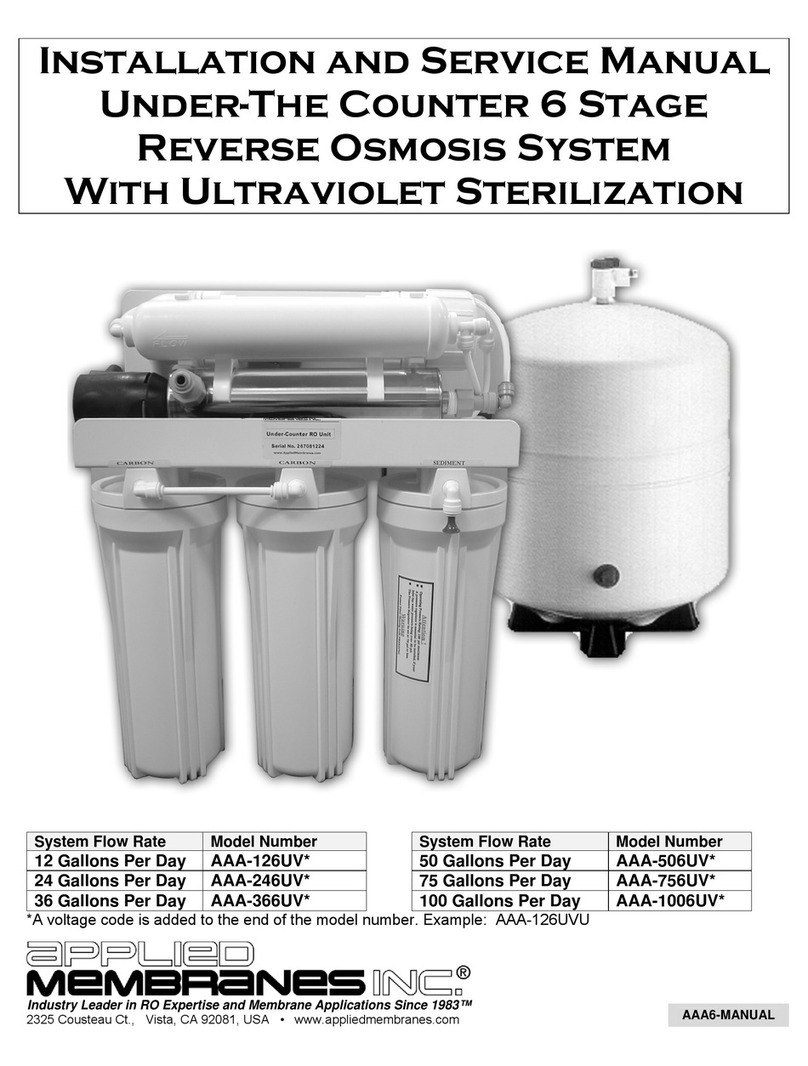
Applied Membranes
Applied Membranes AAA-126UV Series Installation and service manual
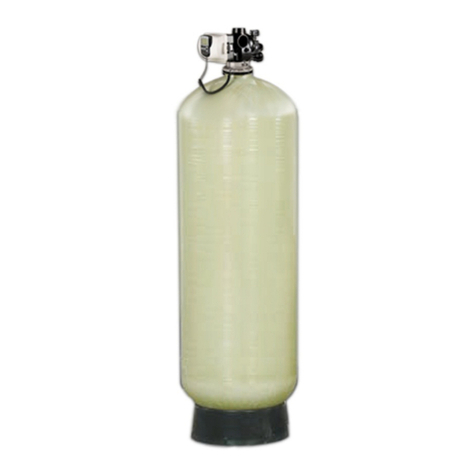
Applied Membranes
Applied Membranes W-G2162EM Manual for Operation & Maintenance

Hoshizaki
Hoshizaki ROX-20TB2-U installation manual

INVISICLEAN
INVISICLEAN IC-WP-2L user guide

